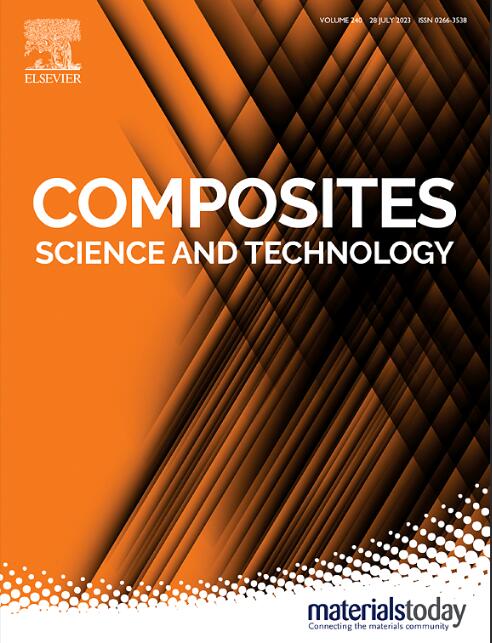Multifunctional bionanocomposite hydrogels based on gelatin methacrylate and polyphenolic 2D nanoparticles Decorated with antimicrobial Bis(imidazolium)-based ionic liquids
IF 8.3
1区 材料科学
Q1 MATERIALS SCIENCE, COMPOSITES
引用次数: 0
Abstract
Developing multifunctional bionanocomposite hydrogels with enhanced mechanical strength and antimicrobial properties is essential for advancing therapeutic applications in biomedical settings. Recent trends incorporate nanoparticles like silver and titanium dioxide for antibacterial action, and graphene oxide for mechanical robustness; however, these approaches often face scalability and cost limitations. This study introduces two-dimensional (2D) nanosheets incorporating ionic liquids to enhance gelatin methacrylate-based hydrogels by simultaneously imparting mechanical robustness, antioxidant properties, and antimicrobial activity. These 2D nanosheets were produced through polyphenolic fractions of propolis-based nanosheets (PFPNSs) through pyrolysis in a neutral atmosphere, followed by functionalization with 3-(Trimethoxysilyl)propyl methacrylate (MPS) and a bisimidazolium based dicationic ionic liquid (BIm-IL) (PFPNS@MPS-BIm-IL). The functionalization with MPS as a silane coupling agent promotes covalent bonding between the nanosheets and polymer chains, improving mechanical stability. Additionally, incorporating ionic liquids significantly boosts the inherent antimicrobial properties of PFPNS, increasing cation availability for microbial membrane disruption. The resulting hydrogels named HGNSILx (including nanosheets functionalized with ionic liquids and vinyl groups) exhibit superior porosity, tunable mechanical attributes, swelling ratios, protein adsorption and significant antimicrobial and hemocompatibility properties, indicating their potential for various biomedical applications. This comprehensive integration enhances cell viability, biocompatibility, and adhesion to natural bone. HGNSILx are promising candidates for tissue regeneration and advanced wound healing applications. Their superior mechanical properties make them particularly well-suited for bone tissue engineering. Additionally, their potential to promote healing and reduce infection risks positions them as valuable options in post-surgical recovery and wound management, ultimately reducing healing times and improving patient outcomes.

求助全文
约1分钟内获得全文
求助全文
来源期刊

Composites Science and Technology
工程技术-材料科学:复合
CiteScore
16.20
自引率
9.90%
发文量
611
审稿时长
33 days
期刊介绍:
Composites Science and Technology publishes refereed original articles on the fundamental and applied science of engineering composites. The focus of this journal is on polymeric matrix composites with reinforcements/fillers ranging from nano- to macro-scale. CSTE encourages manuscripts reporting unique, innovative contributions to the physics, chemistry, materials science and applied mechanics aspects of advanced composites.
Besides traditional fiber reinforced composites, novel composites with significant potential for engineering applications are encouraged.
 求助内容:
求助内容: 应助结果提醒方式:
应助结果提醒方式:


